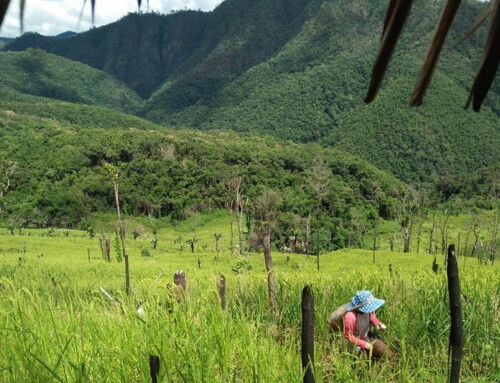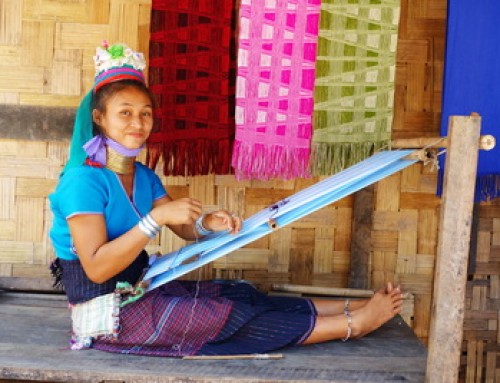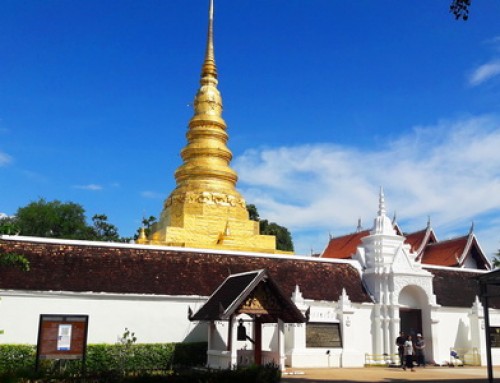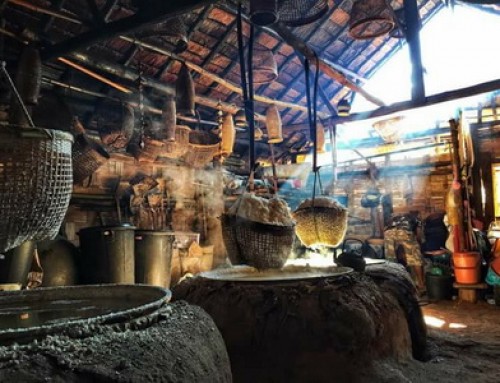Akha Hill tribe Information
Description: Discover the Akha Hill Tribe, a unique culture in Northern Thailand closely

The Akha, also known to the Thai as the Gaw or the E-gaw (names that the Akha do not like), are located primarily with Chiang Rai and Chiang Mai province. The Akha are closely related with the Hani of Yunnan province, China, the Akha-Hani complex numbers about two to three million people, but with just over 70,000 members in Thai territory. The Akha speak a language in the Lolo/Yi branch of the Tibeto-Burman language group, but have no traditional written language. There are a variety of schemes for writing Akha developed by missionaries or linguists which employ Roman, Thai or Burmese characters, but literacy in Akha is still virtually nil. The Akha are traditionally subsistence farmers, growing a variety of crops including rice and corn.
Though many Akha, especially younger people, profess Christianity, Akha Zang (The Akha Way), a total lifestyle perscribed in the oral literature of the Akhas, still runs deep in the consciousness of older generations. The Akha Way combines animism, ancestor worship and their deep relationship with the land.. For an Akha, the Akha Way is a way of life which extends beyond simple religious practice and infuses every aspect of their existence. The Akha Way emphasizes rituals in everyday life and stresses strong family ties; every Akha male can recount his geneology back over fifty generations to the first Akha, Sm Mi O.But the chain of continuity so important for Akha people is being broken. A combination of Thai schooling, land restrictions, some missionary activities, technology and a feeling of social inferiority to lowland Thais is making the once essential Akha Way less attractive and relevant for younger generations who are rapidly integrating into Thai society.
This article comes from the book- “study and the culture of Akha in Chiangrai: 8 groups of Akha tribe – 2003. Akha is the name of the people of a hilltribe that have their own language, beliefs, clothes and way of living. The 8 groups have basic similarities but some even have a different language; like the Ulow Akha and the Aker Akha, who do not understand each other.
The 8 Akha groups of Thailand are:

1. Uloh Akha
The Uloh Akha is a Thai Akha. This group was the first to move to the north of Thailand and stay, moving to DoiTung, Maefahluang. This group is very big and is mostly in Chiangrai, also moving to Chiangmai. The government gives 2 Thai Akhas the opportunity to develop their village; the Akha village at DoiSanjai, Maefahluang and the Akha village at Doisangow Chinagsan district. Chiangrai. ‘Uloh’ means a sharp hat, with the ‘U’ from Udoo meaning a sharp, high circle. The name is given to the Akha by the hat that they wear and this is a prominent group for their hats. The Thai Akha are a large number in Thailand with around 32,500 people spreading around the 5 provinces of Chiangrai, Chiangmai,Lamphang, Prae and Tak in the north of Thailand. Some of these people retain their traditional beliefs, respecting their ancestor spirits and others changed to buddism, Christianity and Islam. Sanjaroengao has the largest population of Akha people. The Uloh Akha language has become the standard between Akha people and is used to communicate between different groups.
2. LorMee Akha
The LorMee Akha is a Burmese Akha. Their population is smaller than the Uloh Akha but this group is known to be energetic. These groups moved from Burma and live in Chiangrai and Chiangmai in Thailand. They moved to Thailand after Uloh Akha, and abundantly, to Maefahluang and the Maesuay district, Chinagrai. The name Lor Mee comes from Doi Mee- the hill in Burma where they originated. They didn’t stay in Burma and so their name changed to be different from the original Doi Mee. These groups have a population of around 19, 000 people throughout Chiangrai, Chiangmai and the Tak province. Around 55 % keep to the old traditional beliefs, respecting their ancestor spirits with the same ceremony as the Uloh Akha, though some groups changed to Buddhism and Christianity. The language is the same as the Uloh Akha but uses a higher tone and is spoken faster.


3. Phamee Akha
Phamee Akha is a Chinese Akha. These groups have lived in China and had an exchange of culture with the Chinese people and are therefore called merchant. With lineage from Sibsongpanna, Yunnan, they mostly live in China, but a few groups live in Thailand in places such as Maesai, Maejan, Maesuay in the Chinagrai province and the Tak province. The village Phamee is called so because this is where bears are found living in the cliffs around the Maesai area. The Akha people moved to live in this area and so call the village DoiPhamee, calling themselves the Phamee Akha. These groups have 2 communities in Thailand; Phamee village in Maesai and Maejantai village in Maesuay, later moving to Giwsadai village, Maejan. When a ceremony takes place, these groups will come together to meet. They have a few different names given from people outside the group, such as Lahbour Akha which means China Akha or Ubya Akha. The population of this group is around 5,200 and they are spread across Tak and Chinagrai. They have old traditional beliefs, respecting the ancestor’s spirit and also, similarly to the other groups, they converted to Christianity.
4. Pear Akha
This group is migrant from Burma because of the conflict in their country and they are living in Maefahluang. ‘Pear Akha’ comes from the leader of their country since they originate in Burma. The population of this group is around 4,500 and they live around Chiangrai and Lamphang. Around 10% retain their old traditional beliefs but most of them converted to Christianity. The language is similar to Uloh Akha, but they speak much louder-almost like shouting- so much that people from outside their group may think they are fighting!


5. NahKha Akha
The Nahkha Akha moved from the border between China and Burma. They moved to Thailand after experiencing conflict living on the border, and not having security of the Chinese government from pirates. ‘NahKha’ is simply the name of the village where they lived in China. They have a population of around 1,900 living in Chinagrai in the Maesuay District. They changed their religion to that of the city they moved to and they are Christian, using the same language as the Phamee Akha. A big NahKha Akha group in Thailand is in Pattana Seri, Maesuay district Chiangrai.
6. Arkher Akha
The Akher Akha moved from China close to Tibet. Firstly they moved to Burma, but the government did nothing to protect them from pirates and so they moved again to Thailand. Arkher Akha is the name given by the other Akha groups because they are so different in ways such as language and clothing. The names they use themselves are Kohkuer or Onjeyor. The population is around 650 and they live in Chiangrai at Maesuay. They believe and practice the old traditions but some groups did change and became christian. The language is absolutely different to the other Akha, but when communicating between other Akha groups they use the Uloh language.


7. UPhee Akha
This group moved from Burma because of the pirates and conflict in Burma and UPhee Akha moved to ChiangTung. UPhee Akha are named by the type of hat they wear. They have a population of around 650 and live in Chiang Rai at Maefahluang. Their beliefs changed to conform to those of the city and now they are Christian. They use the same language as the Uloh Akha.
8. ArJoh Akha
The ArJoh Akha are migrants from Burma because the conflict in that country and they moved to stay at Mae-seay, Chiang Mai. They are named ‘ArJoh’ because they changed from their old traditions to new ways. The population of this group is around 650 and they live in the PongPom village. Most of the population changed to be a Christian and they use a language similar to Uloh Akha.

Where do they live?
The Akha hill tribe people live in Yunnan China, Kengtung in Northern Shan State in Myanmar, Northern Thailand, Laos and North Vietnam. An area with a large percentage of Akha hill people is Mae Salong (now known as Santikhiri) in Chiang Rai province. Akha hill tribe villages are also found in the area of Ban Therd Thai formerly known as Ban Hin Taek, a former residence and base of the so-called “Opium King”, Khun Sa.












Leave A Comment